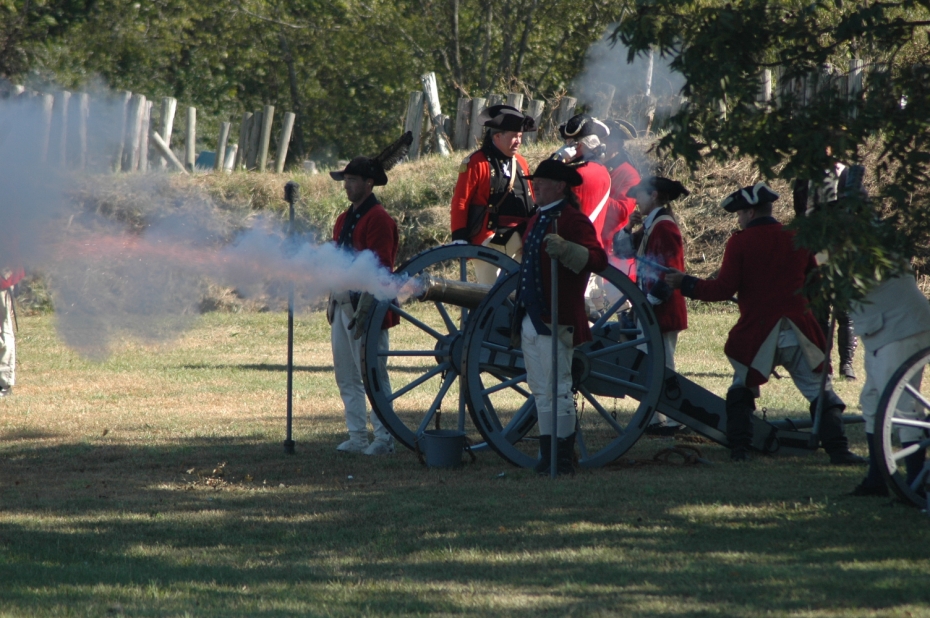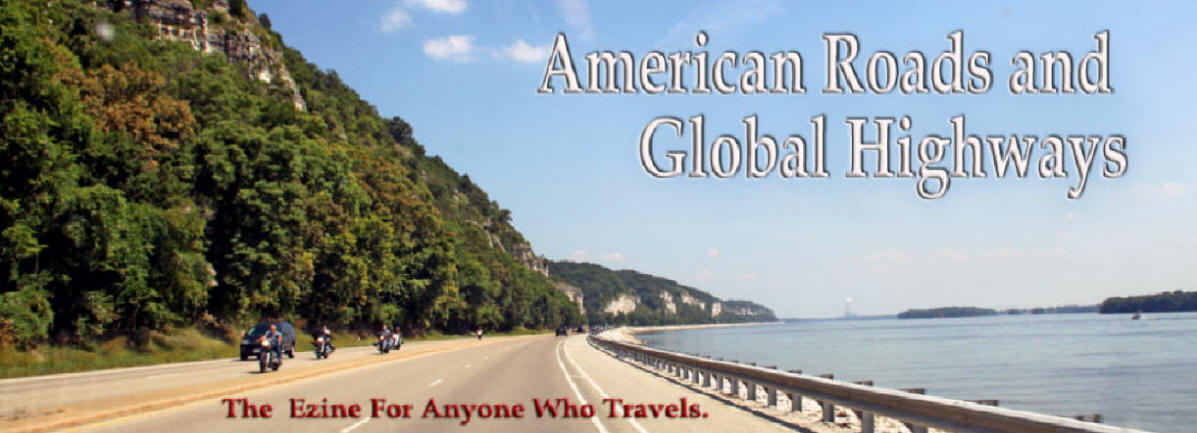|
By 1778 the American
Revolutionary War had stalemated, with the
French joining the war to aid the Americans.
With the northern campaign at an impasse, the
British had decided on a southern strategy of
focusing their efforts on the colonies of
Georgia, South Carolina, North Carolina and
Virginia. The British perceived the South to
have a majority of Loyalists. They occupied
Savannah, Georgia in late-1778 and Charleston,
South Carolina in mid-1779. The goal was to
join forces with the Loyalists and move through
North Carolina and Virginia to create a southern
front that would put pressure on the North. Once
the British secured Charleston on the coast,
they campaigned in the Upstate of South Carolina
and secured key locations of Augusta, Ninety-Six
(see Spring 2013 issue), Camden, Cheraw, and
Georgetown. Camden was significant as it was the
state’s major inland city and was at the
junction of major wagon roads that led to
Charleston and Savanah.
In May, 1780, after
the British defeated the southern Continental
Army at the Battle of Waxhaws (near Lancaster,
South Carolina), British General Clinton left
Charleston and returned to New York, leaving
Lord Cornwallis to secure the rest of South
Carolina and eventually the rest of the South.
There was still Patriot resistance in the state,
notably militia under General Thomas Sumter (the
“Carolina Gamecock”) and General Francis Marion
(the “Swamp Fox”). In addition, General
Washington sent Continental Army troops from
Maryland and Delaware south under the command of
General Johann de Kalb.
In July, 1780
General Horatio Gates, the “Hero of Sarasota,”
arrived in North Carolina to take command of
those Continental troops and decided to move
south to take Camden. Virginia and North
Carolina militias joined “Gate’s Grand Army.”
The plan was to build a defensive works north of
town and force the British to abandon the town,
without a major battle. General Cornwallis got
wind of Gate’s plan and moved additional troops
into Camden, bringing the number of British
troops to just over 2,200, while General Gates
was moving south with about 4,000 Patriot
troops (more like 3,000 troops, if the ill were
not counted). General Cornwallis decided to
confront the Patriot troops and moved north from
Camden. The two armies met expectantly a few
miles north of Camden at 2:00 a.m. on August 16,
1780. Both sides wanted to avoid a night battle,
so the Battle of Camden would take place at
dawn.
The battle began with
an artillery duel at dawn. The American
left-flank was the poorly trained and equipped
Virginia and North Carolina militias, facing the
battle-hardened British troops (with bayonets
that the Americans had never used). The
left-flank collapsed, panicked, and fled. The
right-flank regrouped and a battle that lasted a
little more than an hour would be the American’s
field defeat of the war. Gates left the field
disgraced and would not command again. De Kalb
received three gunshot wounds, was repeatedly
bayonetted, and died three days later. He
is buried in Camden. The dead are still on the
battlefield in unmarked graves. Many of
the captured Patriots ended up in prison ships
in Charleston Harbor.
Buoyed by the
success, the British proceeded to finish the job
of securing South Carolina. It turned out to be
much more difficult than they had planned.
Battles at Cowpens and Kings Mountain in late
1780 and early 1781
(see the summer 2014 issue)
were strategic British defeats that helped seal
the fate of the southern strategy that would end
at Yorktown.
Camden Today
Camden celebrates its
Revolutionary War history (see summer 2018
issue). In what is now part of the city, a
second Revolutionary War battle took place in
1781, the Battle of Hobkirk’s Hill. The
locations are marked with interpretive signage
around the hill. Parts of the city have a very
colonial look, with many buildings looking like
they came out of Charleston. But that is another
travel story; this one is about the
Revolutionary War Field Days held in Historical
Camden. It is an annual reenactment held the
first weekend in November (this year on November
2-3, 2019). While the actual battlefield is
preserved north of the city (free admission),
the reenactment is held at historic Camden south
of the city at Historic Camden (does charge
admission). Camden, the city, deserves its own
article. Anyone going to the Revolutionary War
Days ought to at least drive a mile north and
see how beautiful it is. Some of it looks a
little like Charleston. Before moving on to the
field days, a few photographs of downtown Camden
will tempt any visitor to last least do a quick
visit of the city.
 |
| The Historic Robert Mills
Courthouse, completed in 1827. |
 |
| The Battle of Camden took
place in 1780; in 1781 a second battle,
the Battle of Hobkirk’s Hill, took place
in what is now the City of Camden. A set
of signs marks key locations. |
 |
|
The Clock Tower that sits atop the
Camden Opera House |
 |
|
Key locations and interesting historical
buildings are scattered around the city. |
 |
|
Many sights remind one of Charleston;
this sure seems like a classic
Charleston Single House. |
Revolutionary War Field Days - Before the Battle
The battle takes
place at 1:30 p.m., but it pays to come early.
The troops are already there when the site opens
at 10:00, and they are true reenactors in
uniform and preparing for battle. There is an
American Camp and a British Camp. A powder
magazine, blacksmith shop, demonstrations,
crafts, a merchant’s row, a museum inside the
Kershaw-Cornwallis House, food in McCaa’s
Tavern, cannons, a field hospital (British
Camp), and Cavalry horses (American Camp). There
are scheduled talks at McCaa’s Tavern. On
schedule are a church service, Patriot games,
cricket match, flint knapping, kid’s enlistment,
artillery demonstration (American Camp), court
martial (British Camp), Fife and Drum Corps
demonstration, and English Country Dancers.
 |
|
The event included many craftsmen and
tradesmen including a land surveyor more
than willing to explain his trade and
equipment. |
 |
|
These don’t look like Americans but they
are. They play the drum and fief
and wear red so the General can locate
them quickly, so that he can give
marching orders via the drum and fief. |
 |
|
Camp followers: they received a small
stipend for services rendered. |
 |
|
A group of Over the Mountain Boys –
Americans who came from west of the
Appalachians to fight. |
 |
|
Loyalists at drill prior to the battle. |
 |
|
Americans drill before the battle. |
 |
|
British drill before the battle. |
 |
Hessians at drill before the battle.
Since they are drilling prior to the
battle,
they are not wearing their
distinctive headgear. |
 |
|
American cannoneers at work. |
Revolutionary War Days – The Battle
Since this is a
reenactment, the battle takes place as
historically-described above, with one obvious
exception, that the artillery duel that starts
the battle does not take place at dawn, but at
1:30. To me, the most impressive part of the
battle was the beginning, but not the artillery
duel. The troops marched on to the battlefield
from unseen locations, with drums and
accompanying noise echoing across the soon-to-be
battlefield. You have to hear it to understand
how intimidating British troops marching on to a
battlefield can be. Officers on large horses
direct the battle. There are lots of noise,
cannon smoke, and back-and-forths between the
troops. Some troops “die” on the field. Just
like 1780, the Americans are driven from the
battlefield.

|
American cannoneers during the battle.
Photo credit: Johnny Deal. |
 |
|
British cannoneers during the battle.
Photo Credit: Johnny Deal. |
 |
|
British troops march on to the field.
Photo credit: Johnny Deal. |
 |
|
Over the Mountain Boys in Battle, some
“dead.” Photo Credit: Johnny Deal. |
| |
 |
|
The drums and fiefs are crucial to the
battle. Photo credit: Johnny Deal. |
Author: Thomas J. Straka is a
forestry professor at Clemson University in
South Carolina with a fascination for history.
For additional information:
Historic Camden
Revolutionary War Site:
http://www.kershawcountychamber.org/historic-camden-revolutionary-war-site
Historic Camden: A
Revolutionary War Site and Battlefield
https://www.historiccamden.org/
American Battlefield
Trust – Camden:
https://www.battlefields.org/learn/revolutionary-war/battles/camden
https://www.battlefields.org/learn/maps/camden-august-16-1780
Battle of Camden:
https://revolutionarywar.us/year-1780/battle-of-camden/
|


























